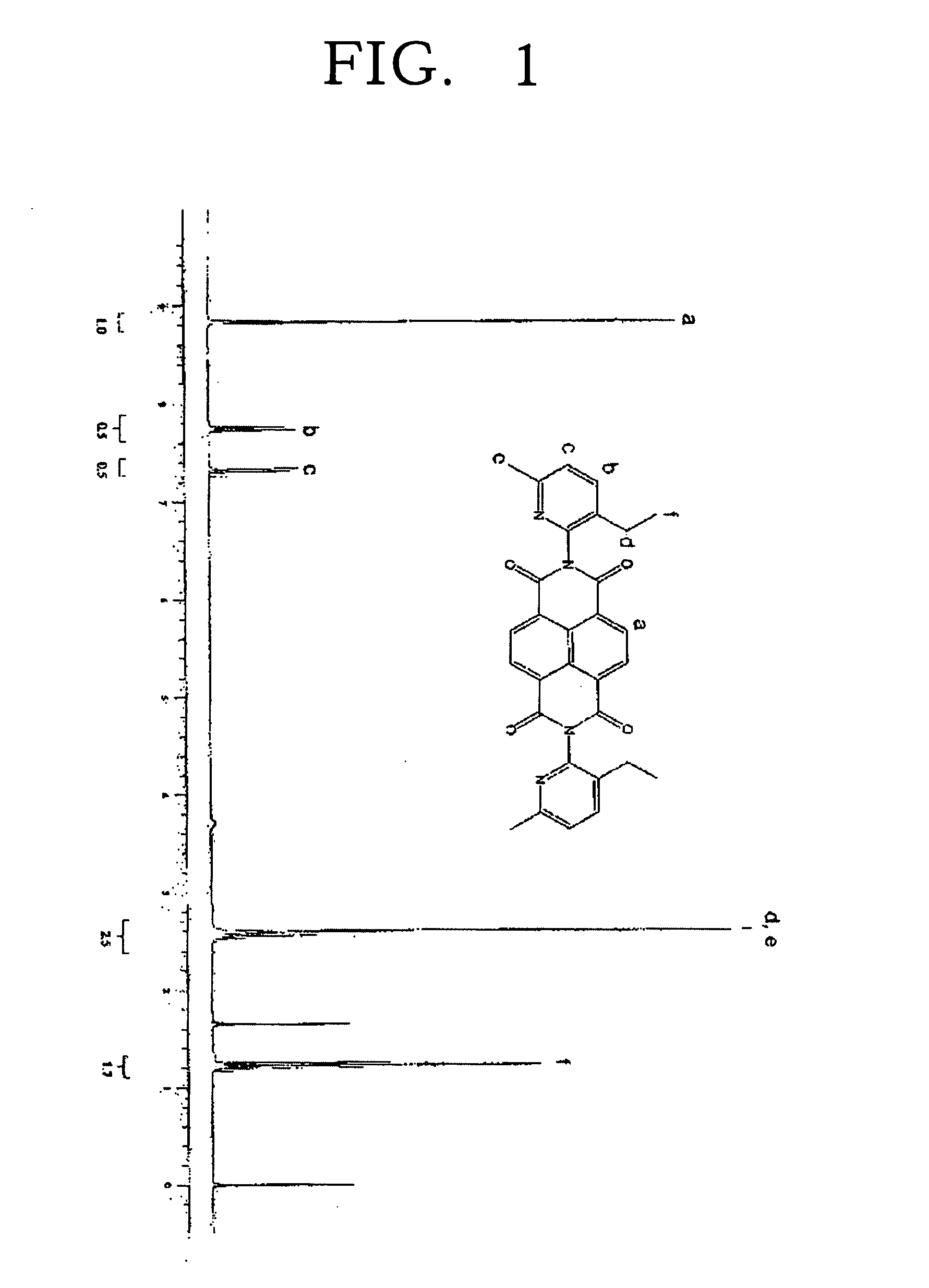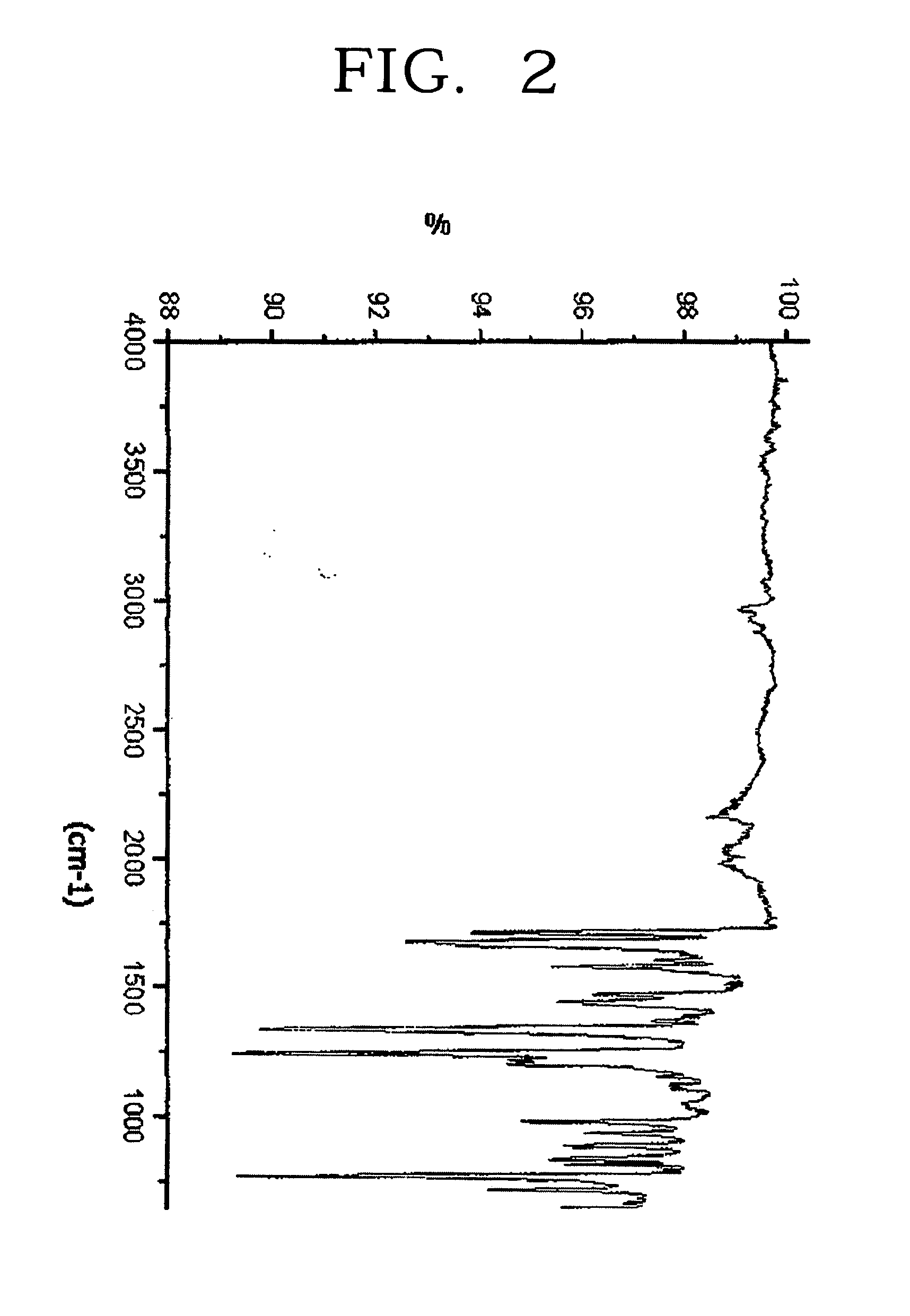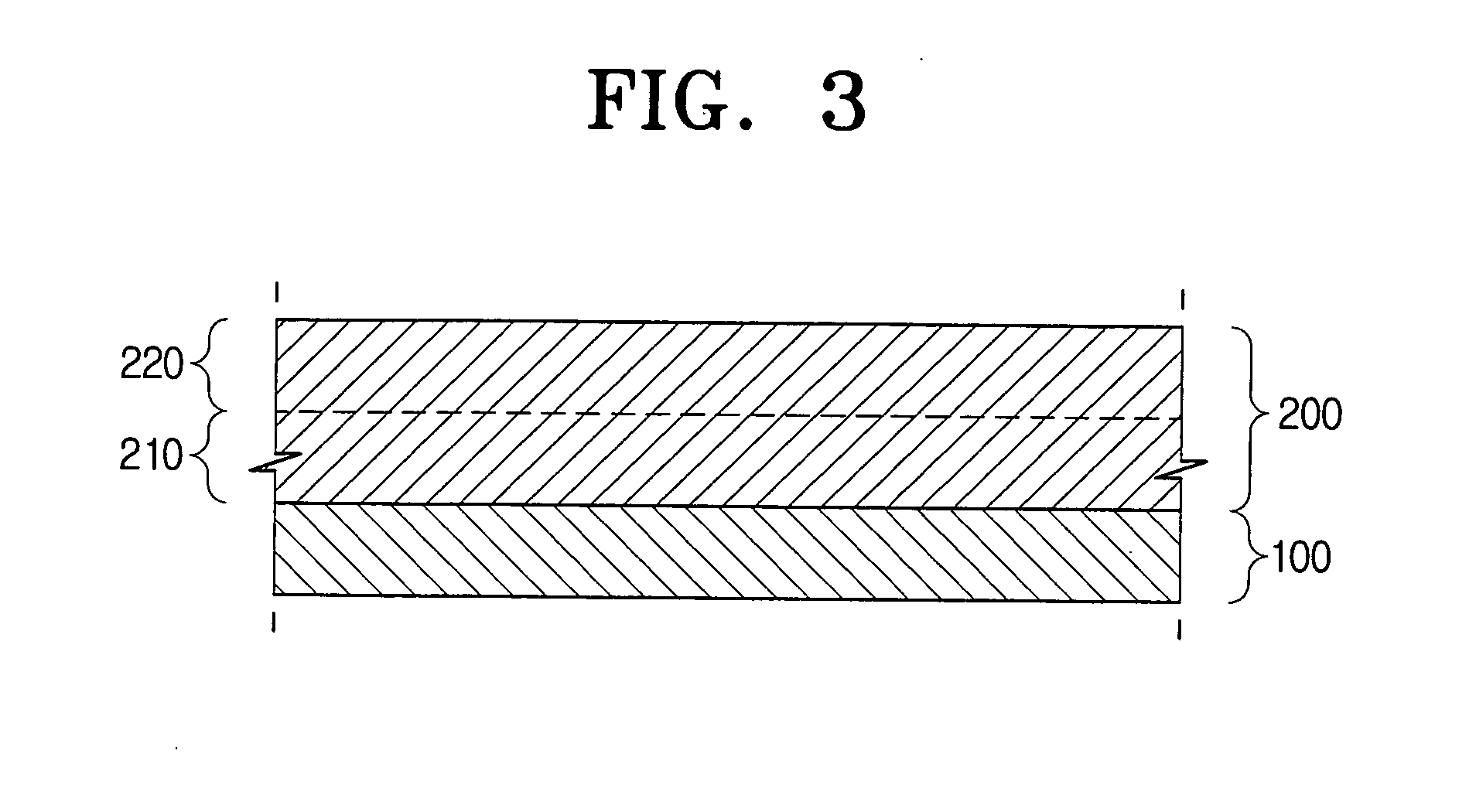Naphthalenetetracarboxylic acid diimide derivatives and electrophotographic photoconductive material using the derivatives
- Summary
- Abstract
- Description
- Claims
- Application Information
AI Technical Summary
Benefits of technology
Problems solved by technology
Method used
Image
Examples
example 1
[0074] Reference is made to the Reaction Scheme 1.
[0075] 10.72 g (0.04 mol) of naphthalene-1,4,5,8-tetracarboxylic acid dianhydride was stirred with 100 ml of dimethylformamide (DMF) at room temperature. A mixture of 11.44 g (0.084 mol) of 2-amino-3-ethyl-6-methylpyridine and 20 ml of DMF was slowly added and stirred for 1 hour at room temperature.
[0076] Next, the reaction was refluxed for 3 hours by elevating the temperature, followed by cooling to room temperature. 60 ml of methanol was added to the cooled solution to form precipitates, followed by filtration.
[0077] The filtered solids were recrystalized from a solvent mixture of chloroform and ethanol. The recrystallized product was dried in vacuo to obtain 20.0 g of light orange crystals. It was confirmed that the resulting solid has a structure of the Formula 5. The yield was 90%.
[0078] Preparation of Electrophotographic Photoconductive Material
example 2
[0079] The parts by weight of each ingredient are based on 100 parts by weight of the total solids content contained in the electrophotographic photoconductive material.
Electron transferring material of the Formula 5: 4.5 parts by weightχ-type H2Pc of the Formula 24: 0.9 parts by weightHole transferring material of the Formula 25 9 parts by weightBinder resin of the Formula 26:15.9 parts by weightMethylene chloride: 84 parts by weight1,1,2-trichloroethane: 36 parts by weight
[0080] The ingredients in the above weight ratio were sandmilled for 2 hours and dispersed by ultrasonic agitation. The dispersion was coated on an anodized aluminum drum with a thickness of the anodized layer of 5 μm by ring coating and dried at 110° C. for 1 hour to prepare the electrophotographic photoconductive material having a thickness of about 12 to 13 μm.
example 3
[0081] The parts by weight of each ingredient is based on 100 parts by weight of the total solids content contained in the electrophotographic photoconductive material.
Electron transferring material of the Formula 5:4.05 parts by weightχ-type H2Pc of the Formula 24: 0.9 parts by weightHole transferring material of the Formula 25: 9 parts by weightBinder resin of the Formula 26:15.9 parts by weightMethylene chloride: 84 parts by weight1,1,2-trichloroethane: 36 parts by weightElectron acceptor of the following Formula 27:0.45 parts by weight
[0082] The ingredients in the above weight ratio were sandmilled for 2 hours and dispersed by ultrasonic agitation. Next, the dispersion was coated on an anodized aluminum drum with a thickness of the anodized layer of 5 μm by ring coating and dried at 110° C. for 1 hour to prepare the electrophotographic photoconductive material having a thickness of about 12 to 13 μm.
PUM
 Login to View More
Login to View More Abstract
Description
Claims
Application Information
 Login to View More
Login to View More - R&D
- Intellectual Property
- Life Sciences
- Materials
- Tech Scout
- Unparalleled Data Quality
- Higher Quality Content
- 60% Fewer Hallucinations
Browse by: Latest US Patents, China's latest patents, Technical Efficacy Thesaurus, Application Domain, Technology Topic, Popular Technical Reports.
© 2025 PatSnap. All rights reserved.Legal|Privacy policy|Modern Slavery Act Transparency Statement|Sitemap|About US| Contact US: help@patsnap.com



